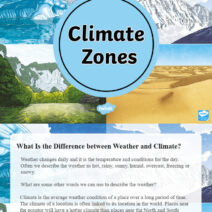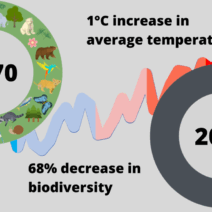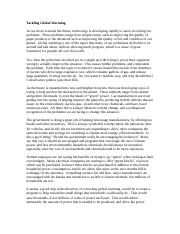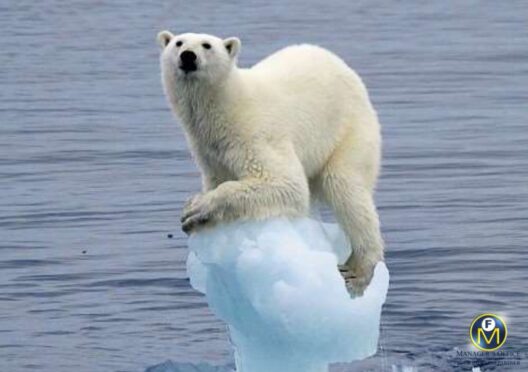In the annals of history, the United States has consistently held a prominent position on the world stage, often acting as a vanguard for democracy, economic stability, and technological innovation. However, when it comes to the pressing issue of climate change, the U.S. faces an intriguing conundrum: How can it leverage its influence to foster international cooperation in tackling global warming, an existential threat that transcends national borders?
The reality is stark; climate change is not a solitary challenge confined to the geographical boundaries of individual nations. It manifests as an intricate tapestry woven from a multitude of strands—rising sea levels, extreme weather events, and shifting ecosystems—all of which render it a formidable adversary demanding a collective response. The U.S., as one of the largest greenhouse gas emitters, bears a significant responsibility, yet it also possesses unparalleled resources and capabilities to instigate change. This brings us to the crux of the matter: Can America rise to the occasion in addressing this global crisis?
The influence of the U.S. is bolstered by its economic prowess and technological advancements. Its innovation ecosystem is rich with possibilities, as seen in renewable energy technologies, sustainable agricultural practices, and carbon capture initiatives. Furthermore, the strategic alliance with various international organizations such as the United Nations and the Intergovernmental Panel on Climate Change (IPCC) paves the way for collaborative efforts. The Paris Agreement, established in 2015, serves as a pivotal framework to unite countries in the battle against climate change, with the U.S. having historically played a central role in its formulation and endorsement.
Yet, skepticism looms large. Political will fluctuates, and commitment can often appear ephemeral. The frequent alterations in administration policies create fissures in the U.S.’s reliability as a leading actor in global environmental governance. For instance, the withdrawal from the Paris Agreement in 2017 raised questions about America’s dedication to the cause. It signified a retreat from its previous commitments, leaving room for other nations to assert their leadership in climate initiatives. Will the U.S. reclaim its mantle? Only time will tell.
Moreover, the U.S. must navigate a complex landscape of vested interests, including economic entities that prioritize short-term profits over long-term sustainability. The fossil fuel industry, while crucial for economic stability, poses a substantial barrier to the transition to a low-carbon economy. This interplay between economic growth and environmental protection presents a critical challenge: how to reconcile the two without sacrificing either?
One potential pathway lies in fostering innovation through public-private partnerships. These collaborations could be pivotal in developing cutting-edge technologies aimed at reducing carbon emissions and enhancing energy efficiency. By channeling resources into research and development, the U.S. can catalyze advancements in solar, wind, and battery technologies, solidifying its position as a leader in the global energy transition. This not only promises environmental benefits but also holds economic potential through job creation in burgeoning green industries.
On the international front, the U.S. has the unique capacity to galvanize other nations to enhance their climate commitments. By offering technological assistance, financial support, and facilitating knowledge transfer, the U.S. can inspire and empower developing nations to embark on their sustainable paths. Challenges in adaptation are prevalent in less affluent countries, where the impacts of climate change are often felt acutely. In these scenarios, U.S. leadership can manifest as a moral imperative, facilitating equitable solutions that lift communities out of vulnerability without exacerbating their carbon footprints.
Furthermore, engaging in global environmental discourse with diverse stakeholders—governments, NGOs, and grassroots organizations—will be vital. By embracing multifaceted perspectives, the U.S. can craft more inclusive policies that resonate with a broader spectrum of society. This participatory approach could potentially strengthen the commitment to environmental action and enhance the effectiveness of policies aimed at mitigating climate change.
Climate change also poses challenges beyond environmental degradation; it is a catalyst for social and economic upheaval. The repercussions of climate inaction are dire and wide-reaching, including food and water scarcity, population displacements, and increased conflict over dwindling resources. Such dynamics underscore the interconnectedness of climate issues with global security. As one of the key architects of international stability, the U.S. must recalibrate its strategies to incorporate climate resilience and adaptation as cornerstones of its foreign policy.
Imagine if the U.S. were to transition fully into a climate-focused global leader. What would that entail? A reimagined foreign policy that prioritizes environmental stewardship could pave the way for innovative diplomatic strategies, demonstrating how collaboration on climate can unify diverse nations. It suggests that the U.S. can wield its soft power effectively when it champions global environmental goals, engendering trust and camaraderie on a scale previously unimagined.
In conclusion, the U.S. role on the world stage concerning climate change is not merely about fulfilling obligations; it is about embracing leadership and moral responsibility. The question remains whether it can transform challenges into opportunities and catalyze a global movement towards sustainability. As time progresses, the path forward necessitates robust commitment, innovative strategies, and solidarity among nations. The fate of our planet may very well depend on the actions of a resolute and engaged United States.







